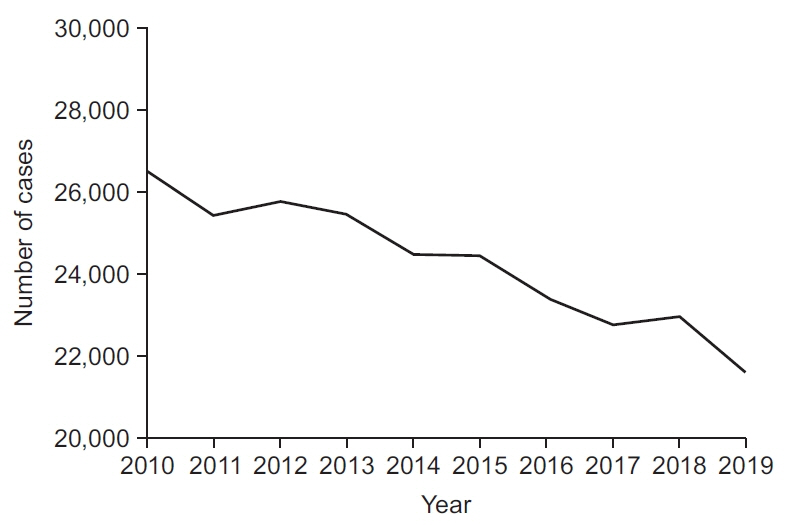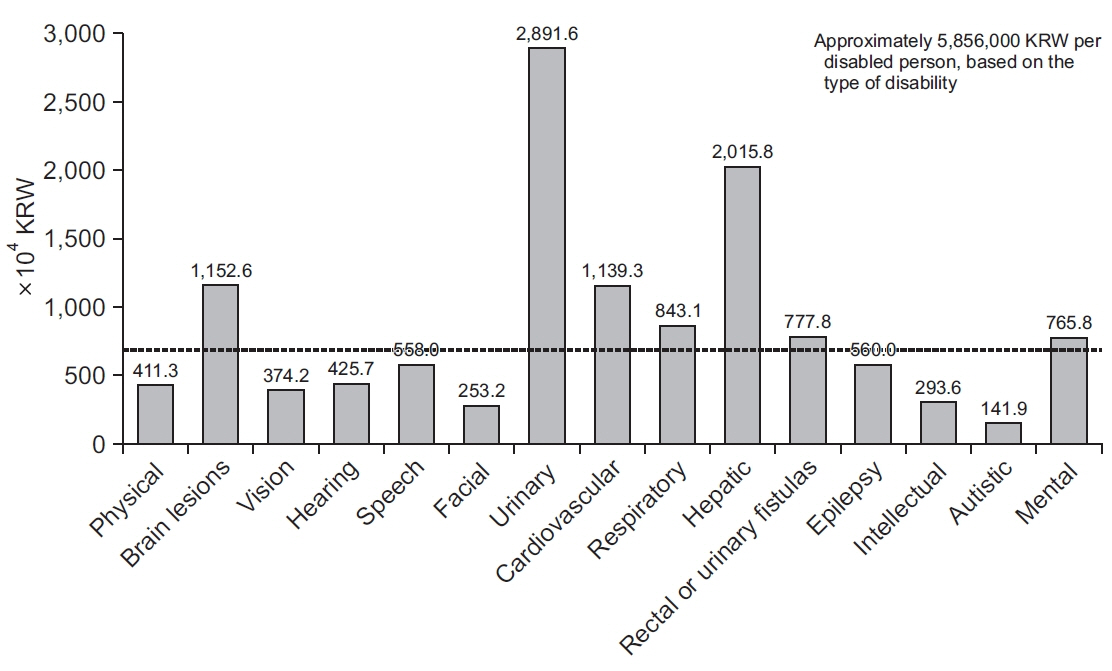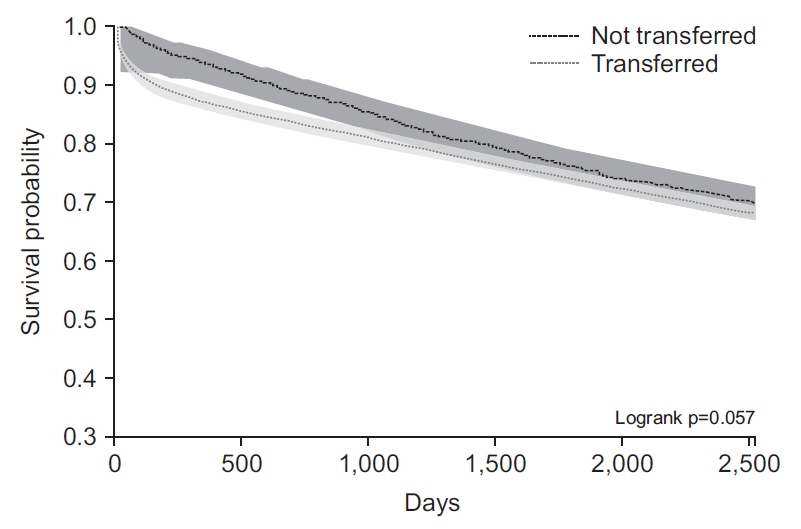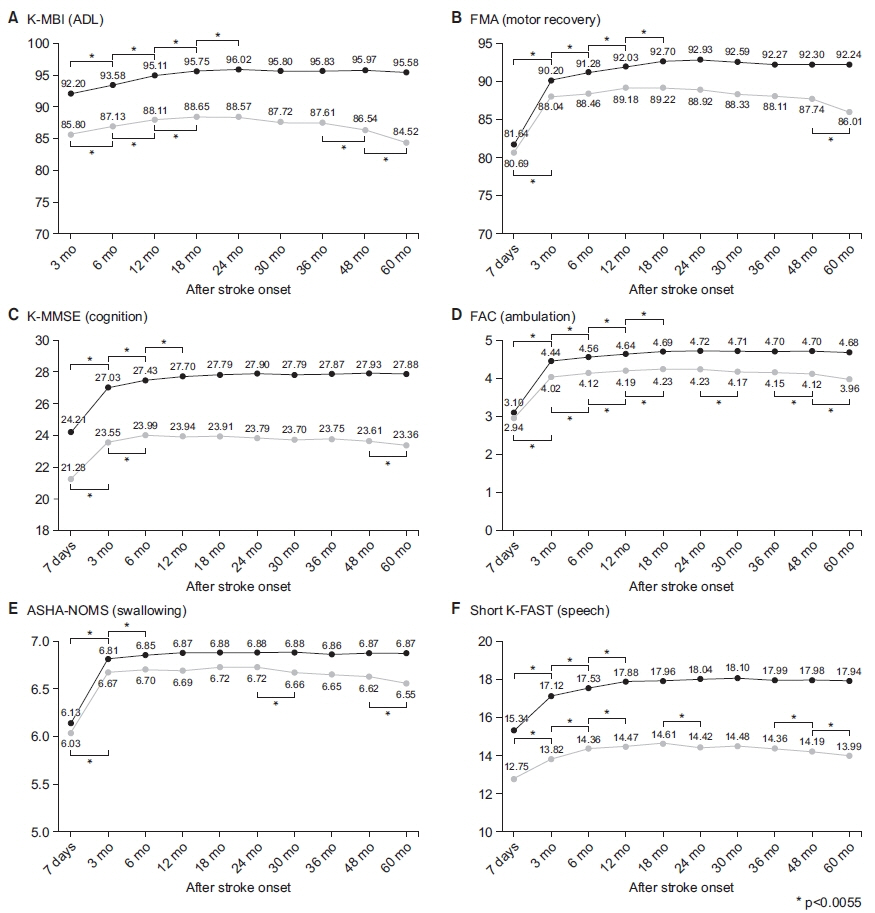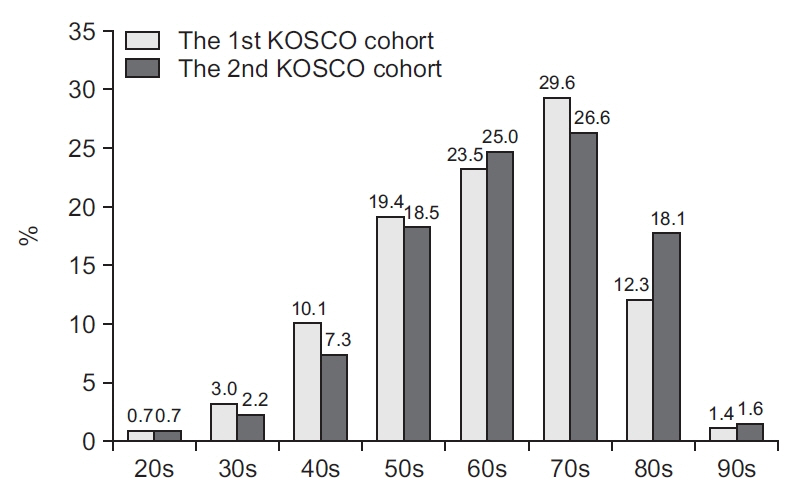Ann Rehabil Med.
2022 Feb;46(1):1-8. 10.5535/arm.22001.
Stroke Rehabilitation Fact Sheet in Korea
- Affiliations
-
- 1Department of Rehabilitation Medicine, Seoul National University Boramae Medical Center, Seoul, Korea
- KMID: 2527094
- DOI: http://doi.org/10.5535/arm.22001
Abstract
- With rapid aging, the number of stroke survivors with disabilities in Korea is increasing even if mortality is declining. Despite coordinated efforts for quality improvement of stroke rehabilitation in Korea, the statistics of stroke rehabilitation were not well reported. This review aimed to provide contemporary and comprehensive statistics and recent changes in stroke rehabilitation in Korea. The Clinical Practice Guideline for Stroke Rehabilitation in Korea was developed in 2009 and updated in 2012 and 2016. Additionally, the representative databases for stroke rehabilitation include the Korean Brain Rehabilitation Database and the Korean Stroke Cohort for functioning and rehabilitation. These nationwide databases provided current information on stroke rehabilitation. Among Korean stroke survivors, one in three had motor impairment, one in four had cognitive impairment, one in three had speech impairment, one in four was dependent in ambulation, one in six had swallowing difficulty, and one in four was dependent in activities in daily living at 5 years after stroke. Comprehensive inpatient rehabilitation following transfer to the department of rehabilitation medicine significantly decreased stroke-related mortality and long-term disability. This review provides an improved understanding of stroke rehabilitation and guidance to implement timely, coordinated, evidence-based stroke rehabilitation services to relieve the socioeconomic burden of stroke.
Keyword
Figure
Cited by 1 articles
-
Efficacy and Safety of Botulinum Toxin Type A (NABOTA) for Post-stroke Upper Extremity Spasticity: A Multicenter Phase IV Trial
Wonjae Hwang, Seong Min Kang, Sang Yoon Lee, Han Gil Seo, Yoon Ghil Park, Bum Sun Kwon, Kwang Jae Lee, Deog Young Kim, Hyoung Seop Kim, Shi-Uk Lee
Ann Rehabil Med. 2022;46(4):163-171. doi: 10.5535/arm.22061.
Reference
-
1. GBD 2019 Stroke Collaborators. Global, regional, and national burden of stroke and its risk factors, 1990-2019: a systematic analysis for the Global Burden of Disease Study 2019. Lancet Neurol. 2021; 20:795–820.2. Chang WH, Sohn MK, Lee J, Kim DY, Lee SG, Shin YI, et al. Korean Stroke Cohort for functioning and rehabilitation (KOSCO): study rationale and protocol of a multi-centre prospective cohort study. BMC Neurol. 2015; 15:42.
Article3. Statistics Korea. Annual report on the causes of death statistics, 2019 [Online]. Daejeon, Korea: Statistics Korea;2020. [cited 2022 Feb 13]. Available from: https://www.kostat.go.kr/portal/korea/kor_nw/1/1/index.board?bmode=read&aSeq=385219.4. Lee YS, Lee HY, Leigh JH, Choi Y, Kim HK, Oh BM. The socioeconomic burden of acquired brain injury among the Korean patients over 20 years of age in 2015–2017: a prevalence-based approach. Brain Neurorehabil. 2021; 14:e22.
Article5. National Rehabilitation Center. 2018 Health statistics of people with disabilities [Internet]. Seoul, Korea: National Rehabilitation Center;2020. [cited 2022 Feb 13]. Available from: http://www.nrc.go.kr/research/board/boardView.do?no=17751&fno=37&depart_ no=&menu_cd=05_02_00_01&board_id=NRC_NOTICE_BOARD&bn=newsView&search_item=&search_ content=&pageIndex=1.6. Kim WS, Bae HJ, Lee HH, Shin HI. Status of rehabilitation after ischemic stroke: a Korean nationwide study. Ann Rehabil Med. 2018; 42:528–35.
Article7. Park HK, Kim SE, Cho YJ, Kim JY, Oh H, Kim BJ, et al. Quality of acute stroke care in Korea (2008-2014): retrospective analysis of the nationwide and nonselective data for quality of acute stroke care. Eur Stroke J. 2019; 4:337–46.
Article8. Kim YH, Han TR, Jung HY, Chun MH, Lee J, Kim DY, et al. Clinical practice guideline for stroke rehabilitation in Korea. Brain Neurorehabil. 2009; 2:1–38.
Article9. Kim DY, Kim YH, Lee J, Chang WH, Kim MW, Pyun SB, et al. Clinical practice guideline for stroke rehabilitation in Korea 2016. Brain Neurorehabil. 2017; 10(Suppl 1):e11.10. Rah UW, Kim YH, Ohn SH, Chun MH, Kim MW, Yoo WK, et al. Clinical practice guideline for stroke rehabilitation in Korea 2012. Brain Neurorehabil. 2004; 7(Suppl 1):S1–S75.
Article11. Joa KL, Han TR, Pyun SB, Rah UW, Park JH, Kim YH, et al. Inpatient stroke rehabilitation outcomes in Korea derived from the Korean Brain Rehabilitation Centers’ online database system for the years 2007 to 2011. J Korean Med Sci. 2015; 30:644–50.
Article12. National Institute of Health. 10 year report of the stroke survival rate, functioning and rehabilitation in Korea. Cheongju, Korea: National Institute of Health;2021.13. Kim MS, Joo MC, Sohn MK, Lee J, Kim DY, Lee SG, et al. Impact of functional status on noncardioembolic ischemic stroke recurrence within 1 year: the Korean Stroke Cohort for functioning and rehabilitation study. J Clin Neurol. 2019; 15:54–61.
Article14. Chang WH, Shin YI, Lee SG, Oh GJ, Lim YS, Kim YH. Characteristics of inpatient care and rehabilitation for acute first-ever stroke patients. Yonsei Med J. 2015; 56:262–70.
Article
- Full Text Links
- Actions
-
Cited
- CITED
-
- Close
- Share
- Similar articles
-
- Correction: Stroke Rehabilitation Fact Sheet in Korea
- Dementia Epidemiology Fact Sheet 2022
- Fact Sheet on Cardiac Rehabilitation for Cardiovascular Disease in South Korea
- Changes in Epidemiological Trends and Rehabilitation Usage in Neurological Diseases in Korea: Stroke
- Prevalence and Current Management of Cardiovascular Risk Factors in Korean Adults Based on Fact Sheets

